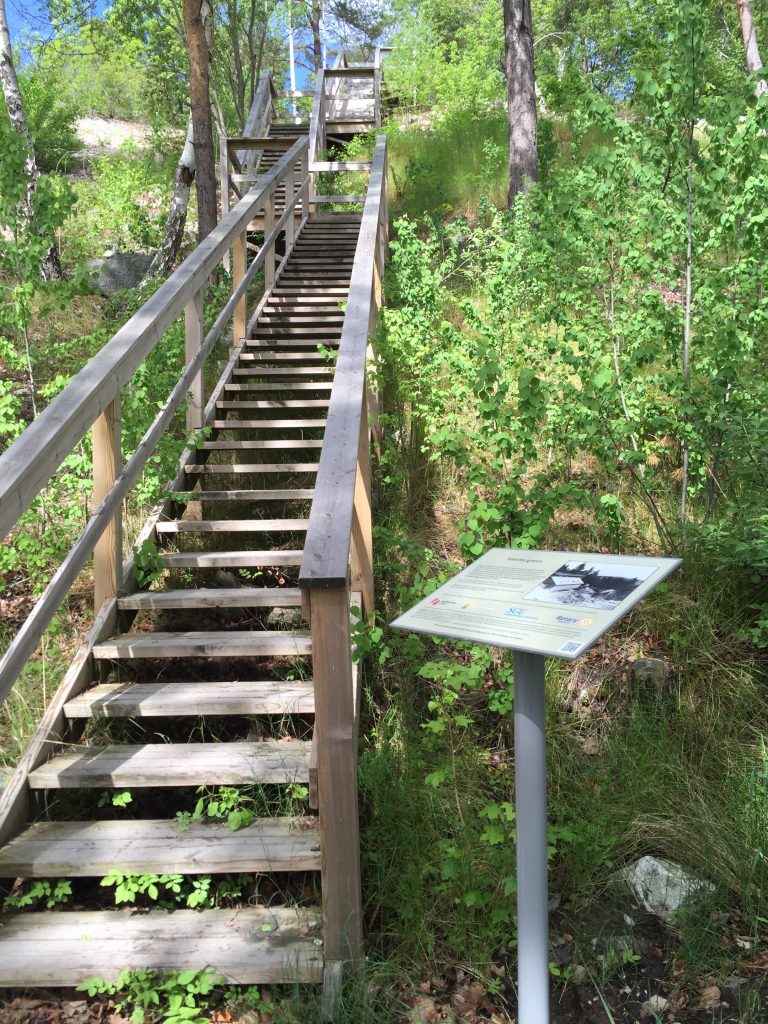Background
In 2000, Waxholm’s Rotary Club put up an information sign at the foot of the mine in cooperation with the city of Vaxholm, which had received a remark from Stockholm’s tourism department that the mine should be made visible.
In 2010, the Waxholm Rotary Club invited one of the Nobel Prize winners in chemistry that year, Dr. Ei-ichi Negishi, to visit the mine. He got there and was well taken care of, but the Rotarians present found it a little embarrassing that the mining area was so difficult to access. This led to the club starting a large, local project with the goal of building a staircase from the road up to the mining area.
When enough money had been raised, the stairs could be realized in 2013. One of the Rotary club members, a skilled carpenter, was the construction supervisor.
The Rotary Club’s involvement in the whole thing continued and led to the formation of the Ytterby Gruva Association in 2015. It is now the association that drives the project forward. (Some of the Rotary Club members are still, in 2024, involved in the board.)
The association’s vision
Ytterby mine is a unique place in the world seen from a natural science perspective. No other place has as many elements, a total of eight, been identified for the first time. The mine as such also offers a very interesting history starting in the 17th century when quartz was mined for Uppland’s blast furnaces and later feldspar for Rörstrand’s porcelain manufacture until the early 1930s. Most recently, the mine has been used as storage for aviation fuel and diesel during the Cold War. The Ytterby mine association has been formed to spread knowledge about this place and aims to:
- Preserve the mine and its unique location for the future and make the mine area accessible to visitors. This includes ensuring that the Ytterby mine is a visitor destination that puts Vaxholm on the world map.
- Tell the history of the mine and the scientific achievements related to the mine so that this knowledge is spread both locally, nationally and internationally. To accomplish this, the association should collect and preserve available information and artifacts.
- Be a source of inspiration for all those who want to study natural science subjects (such as geology, chemistry, microbiology, etc.).
- Favor research and studies, both in natural science and social science subjects, with a connection to the mine’s operations and its history.
